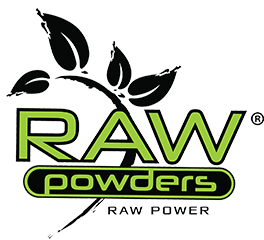EFFECTS OF CHAGA: APPLICATIONS AND BENEFITS OF SUPERFOOD


Chaga, also known as Schiefer Schillerporling, looks back on a long tradition in natural and folk medicine. Especially in Eastern and Northern Europe, the medicinal mushroom has been used for centuries to cure various diseases. For some years now, you can buy Chaga online as a nootropic, and it is conquering the market for dietary supplements, natural remedies and superfoods.
But what is actually so special about this vital mushroom? What are these extraordinary Chaga effects?
Special Chaga properties:
> Chaga stimulates the immune system
> Chaga has an antioxidant effect
> Chaga has an antibacterial effect
> Chaga has an anti-inflammatory effect
It is this effect of Chaga that has led to the vital mushroom being traditionally used for many generations to alleviate or cure various illnesses. Chaga in the form of tea or Chaga powder is said to prevent certain diseases and alleviate or improve physical ailments.
The Chaga benefits and advantages of the medicinal mushroom are undoubtedly manifold.
But not every Chaga effect has been clearly proven so far. Especially with regard to its use for cancer in natural medicine, it should be said that although there are laboratory studies and trials that are quite promising, scientific proof is still lacking. Nevertheless, the areas of application range from the positive Chaga effect on the skin to certain internal diseases.
The most important areas of application of Chaga:
> Inflammations
> Skin diseases (e.g., psoriasis)
> Gastrointestinal complaints (e.g., gastritis, stomach cramps, flu)
> Weakness of the immune system (e.g., colds and flu)
> Fatigue and general condition
> Heart and liver ailments
> Diabetes
> Joint problems
Healthy skin: Chaga effect on skin problems
The Chaga skin effect is particularly precious (but so far rather little known).
The medicinal mushroom is traditionally used for skin diseases such as psoriasis or pigment disorders.
This is partly due to the active ingredients in the Chaga mushroom, such as triterpenes (a component of essential oils), alkaloids and tannin (a plant tanning agent). Chaga also contains many antioxidants, which helps to protect the cells. And: Chaga has an anti-inflammatory effect - ideal for treating skin conditions.
Psoriasis or neurodermatitis, for example, is traditionally treated in Lapland or Siberia with the help of a tincture made from the Chaga mushroom.
It has been used for centuries as a household remedy for various skin conditions and diseases. The positive effect of Chaga on the skin is that it fights inflammation and, at the same time, supports the regeneration of destroyed skin layers. Chaga is also said to be able to successfully alleviate redness or severe itching of the skin. Moreover, the Chaga mushroom is a natural remedy, unlike cortisone ointments, antibiotics or the like.
Nevertheless, it is always advisable to consult conventional medicine, especially in the case of serious diseases of the internal organs, diabetes, immunodeficiency, etc. The following applies: talk to your doctor before taking Chaga. Chaga can also have side effects. And: the dosage of Chaga is essential for a successful application of the medicinal mushroom.
Chaga effect and dosage: what you need to know
In order to make the most of the benefits of Chaga, the correct dosage of Chaga is very important.
Chaga is a very potent superfood - after all, the medicinal mushroom contains an unusually high amount of antioxidants. In fact, Chaga has the highest known ORAC value (Oxygen Radical Absorption Capacity). The higher this value, the more free radicals the product can neutralise and protect the organism from harmful substances. The ORAC value of Chaga is over 1,000,000 µmol TE/100 g. For comparison, the ORAC value of blueberries, another superfood, is about 6,552 µmol TE/100 g. By the way, our daily requirement is between 5,000 and 7,000 units.
In order to benefit from all these advantages of Chaga, it must be prepared and used correctly. The purpose for which one takes Chaga tea or Chaga powder and of course the necessary dose varies. To prevent certain diseases or to alleviate acute pain, regular use is recommended, mostly in the form of tea or Chaga powder, in which case the dosage of Chaga is usually very low.
In case of skin injuries or skin problems, however, Chaga is applied as a tincture to the affected areas. In this case, the necessary dosage is higher.
Chaga for the skin: sprinkle the affected part of the body with a high dosage of Chaga tincture (higher dosage than when taken as a drink) and leave to act for several hours if necessary. Finally: gently rinse the affected skin area with clear, lukewarm water and repeat the treatment regularly.
Experience the Chaga effect yourself: find superfoods
Many superfoods such as blueberries, goji berries, flaxseed or vegetables are available fresh in the supermarket. Others, such as Chaga, Sea Moss or Cordyceps can be bought as powder or capsules as nootropics and ordered online.
Sources:
https://de.wikipedia.org/wiki/Schiefer_Schillerporling
https://www.chaga-pilz.de/wirkung/
https://www.chaga-pilz.com/chaga-pilz-wirkung/
https://dr-barbara-hendel.com/de/ernaehrung/tabellen/orac-wert-tabelle/
https://schnelleinfachgesund.de/lebensmittel-mit-hohem-orac-wert/
https://www.zentrum-der-gesundheit.de/ernaehrung/lebensmittel/superfoods/superfood
Text author:
Kay Svegler
Communications, PR, American Studies, University of Leipzig
Journalist and freelance writer (e.g. Süddeutsche Zeitung, BILD, MDR etc.)
Former Senior PR Manager for Fischer Appelt, Sustainability and Diversity Manager for DKB




_front%20(1)-250x250.png)



_front%20(1)-250x250.png)

-(NN)_front%20(1)-min-250x250.png)

_front%20(1)-250x250.png)



_front%20(1)-min-250x250.png)
_front%20(1)%20(1)-250x250.png)
_front%20(1)%20(1)-250x250.png)








